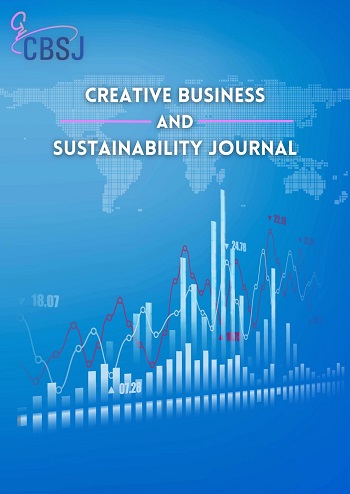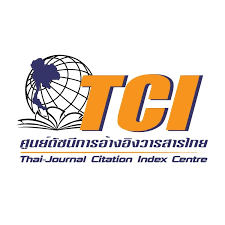Navigating Spin-Off Decisions: The Role of Key Factors Support in Thai Universities
DOI:
https://doi.org/10.58837/CHULA.CBSJ.46.2.2Keywords:
Academic Spin-Off Ventures, Intellectual Property Support, Funding Resources, Technology Transfer Offices, Technology CommercializationAbstract
The study investigates academic spin-off ventures in Thai universities, with a particular focus on the perception of university intellectual property support, funding support, attitudes towards intellectual property knowledge, and the perceived influence of funding resources on spin-off decisions. A positive correlation exists between favorable intellectual property knowledge and spin-off engagement, suggesting the need for educational programs to enhance awareness. Perceived funding resources significantly impact spin-off decisions, emphasizing the importance of accessible financial support. Collaboration between universities and stakeholders is vital to providing diverse funding opportunities, including government grants and venture capital. While institutional support lacks statistical significance, personal beliefs heavily influence spin-off decisions. These insights are crucial for fostering a thriving spin-off ecosystem in Thai universities, with implications for economic and societal development. Recommendations include investing in faculty and researcher education on intellectual property and ensuring diverse funding sources are available to effectively support academic spin-off ventures.
References
Algieri, B., Aquino, A., & Succurro, M. (2011). Technology transfer offices and academic spin-off creation: The case of Italy. The Journal of Technology Transfer, 38(4), 382-400. https://doi.org/10.1007/s10961-011-9241-8
Anderson, J. C., & Gerbing, D. W. (1984). The effect of sampling error on convergence, improper solutions, and goodness-of-fit indices for maximum likelihood confirmatory factor analysis. Psychometrika, 49(2), 155-173. https://doi.org/10.1007/bf02294170
Aragón-Sánchez, A., Baixauli‐Soler, J. S., & Carrasco-Hernández, A. (2017). A missing link: The behavioral mediators between resources and entrepreneurial intentions. International Journal of Entrepreneurial Behavior & Research, 23(5), 752-768. https://doi.org/10.1108/ijebr-06-2016-0172
Bentler, P. M., & Chou, C. P. (1987). Practical issues in structural modeling. Sociological Methods & Research, 16(1), 78-117. https://doi.org/10.1177/0049124187016001004
Blanchflower, D. G., & Oswald, A. J. (1998). What makes an entrepreneur?. Journal of Labor Economics, 16(1), 26-60. https://doi.org/10.1086/209881
Bodolica, V., & Spraggon, M. (2021). Incubating innovation in university settings: Building entrepreneurial mindsets in the future generation of innovative emerging market leaders. Education + Training, 63(4), 613-631. https://doi.org/10.1108/ET-06-2020-0145
Bourelos, E., Magnusson, M., & McKelvey, M. (2012). Investigating the complexity facing academic entrepreneurs in science and engineering: The complementarities of research performance, networks and support structures in commercialization. Cambridge Journal of Economics, 36(3), 751-780. https://doi.org/10.1093/cje/bes014
Clarysse, B., Tartari, V., & Salter, A. (2011). The impact of entrepreneurial capacity, experience, and organizational support on academic entrepreneurship. Research Policy, 40(8), 1084-1093. https://doi.org/10.1016/j.respol.2011.05.010
Cortina, J. M. (1993). What is coefficient alpha? An examination of theory and applications. Journal of Applied Psychology, 78(1), 98-104. https://doi.org/10.1037/0021-9010.78.1.98
Duval-Couetil, N., Pilcher, J., Hart-Wells, E., Weilerstein, P., & Gotch, C.M. (2014). Undergraduate involvement in intellectual property protection at Universities: Views from technology transfer professionals. International Journal of Engineering Education, 30(1), 60-71.
Elpida, S., Galanakis, K., Bakouros, I., & Platias, S. (2010). The spin-off chain. Journal of Technology Management & Innovation, 5(3), 51-68. https://doi.org/10.4067/s0718-27242010000300004
Etzkowitz, H., Germain-Alamartine, E., Keel, J., Kumar, C., Smith, K. N., & Albats, E. (2019). Entrepreneurial university dynamics: Structured ambivalence, relative deprivation and institution-formation in the Stanford innovation system. Technological Forecasting and Social Change, 141, 159-171. https://doi.org/10.1016/j.techfore.2018.10.019
Evans, D. S., & Jovanovic, B. (1989). An estimated model of entrepreneurial choice under liquidity constraints. Journal of Political Economy, 97(4), 808-827. https://doi.org/10.1086/261629
Fini, R., Fu, K., Mathisen, M. T., Rasmussen, E., & Wright, M. (2017). Institutional determinants of university spin-off quantity and quality: A longitudinal, multilevel, cross-country study. Small Business Economics, 48(2), 361-391. https://doi.org/10.1007/s11187-016-9779-9
Gentry, W. M., & Hubbard, R. G. (2004). Entrepreneurship and household saving. Advances in Economic Analysis & Policy, 4(1), 1-55. https://doi.org/10.2202/1538-0637.1053
Gibb, A. (2012). Exploring the synergistic potential in entrepreneurial university development: Towards the building of a strategic framework. Annals of Innovation & Entrepreneurship, 3(1), 16742. https://doi.org/10.3402/aie.v3i0.17211
Glass, A. J., & Saggi, K. (2002). Intellectual property rights and foreign direct investment. Journal of International Economics, 56(2), 387-410. https://doi.org/10.1016/s0022-1996(01)00117-9
Gras, J. M. G., Lapera, D. R. G., Solves, I. M., Jover, A. J. V., & Azuar, J. S. (2008). An empirical approach to the organisational determinants of spin-off creation in European universities. International Entrepreneurship and Management Journal, 4(2), 187-198. https://doi.org/10.1007/s11365-007-0061-0
Guerrero, M., & Urbano, D. (2012). The development of an entrepreneurial university. The Journal of Technology Transfer, 37(1), 43-74. https://doi.org/10.1007/s10961-010-9171-x
Hair, J. F., Black, W. C., Babin, B. J., & Anderson, R. E. (2010). Multivariate data analysis (7th ed.). Pearson.
Hayter, C. S. (2015). Public or private entrepreneurship? Revisiting motivations and definitions of success among academic entrepreneurs. The Journal of Technology Transfer, 40(6), 1003-1015. https://doi.org/10.1007/s10961-015-9426-7
Hayter, C. S. (2016). A trajectory of early-stage spinoff success: The role of knowledge intermediaries within an entrepreneurial university ecosystem. Small Business Economics, 47(3), 633-656. https://doi.org/10.1007/s11187-016-9756-3
Hayter, C. S., Lubynsky, R., & Maroulis, S. (2017). Who is the academic entrepreneur? The role of graduate students in the development of university spinoffs. The Journal of Technology Transfer, 42(6), 1237-1254. https://doi.org/10.1007/s10961-016-9470-y
Hu, L. T., & Bentler, P. M. (1999). Cutoff criteria for fit indexes in covariance structure analysis: Conventional criteria versus new alternatives. Structural Equation Modeling: A Multidisciplinary Journal, 6(1), 1-55. http://dx.doi.org/10.1080/10705519909540118
Ismail, K., Mason, C., Cooper, S., Omar, W. A., & Majid, I. A. (2010). University spin-off formations: How decision-making process has been made?. International Journal of Business and Social Science, 1(2), 103-123.
Javorcik, B. S. (2004). The composition of foreign direct investment and protection of intellectual property rights: Evidence from transition economies. European Economic Review, 48(1), 39-62. https://doi.org/10.1016/s0014-2921(02)00257-x
Katila, R., Rosenberger, J. D., & Eisenhardt, K. M. (2008). Swimming with sharks: Technology ventures, defense mechanisms, and corporate relationships. Administrative Science Quarterly, 53(2), 295-332. https://doi.org/10.2189/asqu.53.2.295
Kristiansen, S., & Indarti, N. (2004). Entrepreneurial intention among Indonesian and Norwegian students. Journal of Enterprising Culture, 12(1), 55-78. https://doi.org/10.1142/s021849580400004x
Link, A. N., & Scott, J. T. (2005). Opening the ivory tower's door: An analysis of the determinants of the formation of U.S. university spin-off companies. Research Policy, 34(7), 1106-1112. https://doi.org/10.1016/j.respol.2005.05.015
Lockett, A., Siegel, D., Wright, M., & Ensley, M. D. (2005). The creation of spin-off firms at public research institutions: Managerial and policy implications. Research Policy, 34(7), 981-993. https://doi.org/10.1016/j.respol.2005.05.010
Markman, G. D., Siegel, D. S., & Wright, M. (2008). Research and technology commercialization. Journal of Management Studies, 45(8), 1401-1423. https://doi.org/10.1111/j.1467-6486.2008.00803.x
Mathisen, M. T., & Rasmussen, E. (2019). The development, growth, and performance of university spin-offs: A critical review. The Journal of Technology Transfer, 44(6), 1891-1938. https://doi.org/10.1007/s10961-018-09714-9
Meysman, J., De Cleyn, S. H., & Braet, J. (2019). Cash, community, and coordination: The triple-c categorization of technology transfer office organizational philosophy. International Entrepreneurship and Management Journal, 15(3), 815-835. https://doi.org/10.1007/s11365-018-0555-y
Ministry of Higher Education, Science, Research and Innovation. (2021). Assessment guide defining groups of higher education institutions (revised edition). https://qa.mcu.ac.th/wp-content/uploads/2023/03/reinventingUniversity.pdf
Montiel-Campos, H. (2018). University spin-off creation in the Latin American region. Journal of Entrepreneurship in Emerging Economies, 10(3), 386-408. https://doi.org/10.1108/jeee-02-2018-0011
Mosey, S., Guerrero, M., & Greenman, A. (2017). Technology entrepreneurship research opportunities: Insights from across Europe. The Journal of Technology Transfer, 42(1), 1-9. https://doi.org/10.1007/s10961-015-9462-3
Mowery, D. C., & Sampat, B. N. (2004). The Bayh-Dole Act of 1980 and university–industry technology transfer: A model for other OECD governments?. The Journal of Technology Transfer, 30(1-2), 115-127. https://doi.org/10.1007/s10961-004-4361-z
Munari, F., Rasmussen, E., Toschi, L., & Villani, E. (2016). Determinants of the university technology transfer policy-mix: A cross-national analysis of gap-funding instruments. The Journal of Technology Transfer, 41(6), 1377-1405. https://doi.org/10.1007/s10961-015-9448-1
Mustar, P., Renault, M., Colombo, M. G., Piva, E., Fontes, M., Lockett, A., Wright, M., Clarysse, B., & Moray, N. (2006). Conceptualising the heterogeneity of research-based spin-offs: A multi-dimensional taxonomy. Research Policy, 35(2), 289-308. https://doi.org/10.1016/j.respol.2005.11.001
National Union of Students. (2012). Student attitudes towards intellectual property. http://ipaware.org/wp-content/uploads/2016/10/20121012-IP-report.pdf
Nunnally, J. C. (1978). Psychometric theory (2nd ed.). McGraw-Hill.
Odei, M. A., & Novak, P. (2022). Determinants of universities' spin-off creations. Economic Research-Ekonomska Istraživanja, 36(1), 1279–1298. https://doi.org/10.1080/1331677X.2022.2086148
Odei, S. A., & Stejskal, J. (2018). Factors influencing spin-off activities at universities: Empirical evidence from the United Kingdom. In XXI. mezinárodní kolokvium o regionálních vědách. Sborník příspěvků (pp. 146-152). https://doi.org/10.5817/cz.muni.p210-8970-2018-14
O'Shea, R. P., Allen, T. J., Chevalier, A., & Roche, F. (2005). Entrepreneurial orientation, technology transfer and spinoff performance of U.S. universities. Research Policy, 34(7), 994-1009. https://doi.org/10.1016/j.respol.2005.05.011
Perkmann, M., Tartari, V., McKelvey, M., Autio, E., Broström, A., D'Este, P., Fini, R., Geuna, A., Grimaldi, R., Hughes, A., Krabel, S., Kitson, M., Llerena, P., Lissoni, F., Salter, A., & Sobrero, M. (2013). Academic engagement and commercialisation: A review of the literature on university–industry relations. Research Policy, 42(2), 423-442. https://doi.org/10.1016/j.respol.2012.09.007
Pirnay, F., Surlemont, B., & Nlemvo, F. (2003). Toward a typology of university spin-offs. Small Business Economics, 21(4), 355-369. https://doi.org/10.1023/A:1026167105153
Pitsakis, K., Souitaris, V., & Nicolaou, N. (2015). The peripheral halo effect: Do academic spin-offs influence universities' research income?. Journal of Management Studies, 52(3), 321-353. https://doi.org/10.1111/joms.12119
Radinger-Peer, V., & Sedlacek, S. (2017). Barriers to the generation of university spin-offs: A case study of Vienna. Geographies of growth (pp. 441-442). https://doi.org/10.4337/9781785360602.00024
Rasmussen, E., & Borch, O. J. (2010). University capabilities in facilitating entrepreneurship: A longitudinal study of spin-off ventures at mid-range universities. Research Policy, 39(5), 602-612. https://doi.org/10.1016/j.respol.2010.02.002
Rasmussen, E., Mosey, S., & Wright, M. (2014). The influence of university departments on the evolution of entrepreneurial competencies in spin-off ventures. Research Policy, 43(1), 92-106. https://doi.org/10.1016/j.respol.2013.06.007
Rasmussen, E., & Wright, M. (2015). How can universities facilitate academic spin-offs? An entrepreneurial competency perspective. The Journal of Technology Transfer, 40(5), 782-799. https://doi.org/10.1007/s10961-014-9386-3
Rovinelli, R. J., & Hambleton, R. K. (1977). On the use of content specialists in the assessment of criterion-referenced test item validity. Dutch Journal of Educational Research, 2, 49-60.
Schneider, P. H. (2005). International trade, economic growth and intellectual property rights: A panel data study of developed and developing countries. Journal of Development Economics, 78(2), 529-547. https://doi.org/10.1016/j.jdeveco.2004.09.001
Shane, S. (2004). Academic entrepreneurship: University spinoffs and wealth creation. Edward Elgar Publishing.
Siegel, D. S., Waldman, D., & Link, A. (2003). Assessing the impact of organizational practices on the relative productivity of university technology transfer offices: An exploratory study. Research Policy, 32(1), 27-48. https://doi.org/10.1016/S0048-7333(01)00196-2
Siegel, D. S., Wright, M., & Lockett, A. (2007). The rise of entrepreneurial activity at universities: Organizational and societal implications. Industrial and Corporate Change, 16(4), 489-504. https://doi.org/10.1093/icc/dtm015
Siegel, D. S., & Wright, M. (2015). Academic entrepreneurship: Time for a rethink?. British Journal of Management, 26(4), 582-595. https://doi.org/10.1111/1467-8551.12116
Singh, S. (2015). Innovation, intellectual property rights and competition policy. Innovation and Development, 5(1), 147-164. https://doi.org/10.1080/2157930x.2014.1003450
Svotwa, T. D., Jaiyeoba, O., Roberts-Lombard, M., & Makanyeza, C. (2022). Perceived access to finance, entrepreneurial self-efficacy, attitude toward entrepreneurship, entrepreneurial ability, and entrepreneurial intentions: A Botswana youth perspective. SAGE Open, 12(2), 215824402210964. https://doi.org/10.1177/21582440221096437
Tan, L. P. (2018). The relationship between perceived access to finance and social entrepreneurship intentions among university students in Vietnam. The Journal of Asian Finance, Economics and Business, 5(1), 63-72. https://doi.org/10.13106/jafeb.2018.vol5.no1.63
Thursby, J. G., & Thursby, M. C. (2002). Who is selling the Ivory Tower? Sources of growth in university licensing. Management Science, 48(1), 90-104. https://doi.org/10.1287/mnsc.48.1.90.14271
Vohora, A., Wright, M., & Lockett, A. (2004). Critical junctures in the development of university high-tech spinout companies. Research Policy, 33(1), 147-175. https://doi.org/10.1016/S0048-7333(03)00107-0
Yordanova, D., Filipe, J., & Coelho, M. d. F. B. (2020). Technopreneurial intentions among Bulgarian STEM students: The role of the university. Sustainability, 12(16), 6455. https://doi.org/10.3390/su12166455
Downloads
Published
How to Cite
Issue
Section
License
Copyright (c) 2024 Creative Business and Sustainability Journal

This work is licensed under a Creative Commons Attribution-NonCommercial-NoDerivatives 4.0 International License.
Opinions and discussions in papers published by the Creative Business and Sustainability Journal (CBSJ) are deemed as personal opinions and the responsibility of the writers. They are not the opinions or responsibility of the Chulalongkorn Business School of Chulalongkorn University.
Papers, content, information etc. appearing in the Journal are deemed to be the copyright property of the Chulalongkorn Business School of Chulalongkorn University. Anybody or any organization that wishes to publish any part of them or use them in any way must obtain written permission from the Chulalongkorn Business School, Chulalongkorn University.





